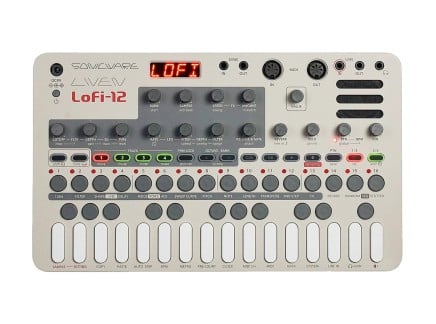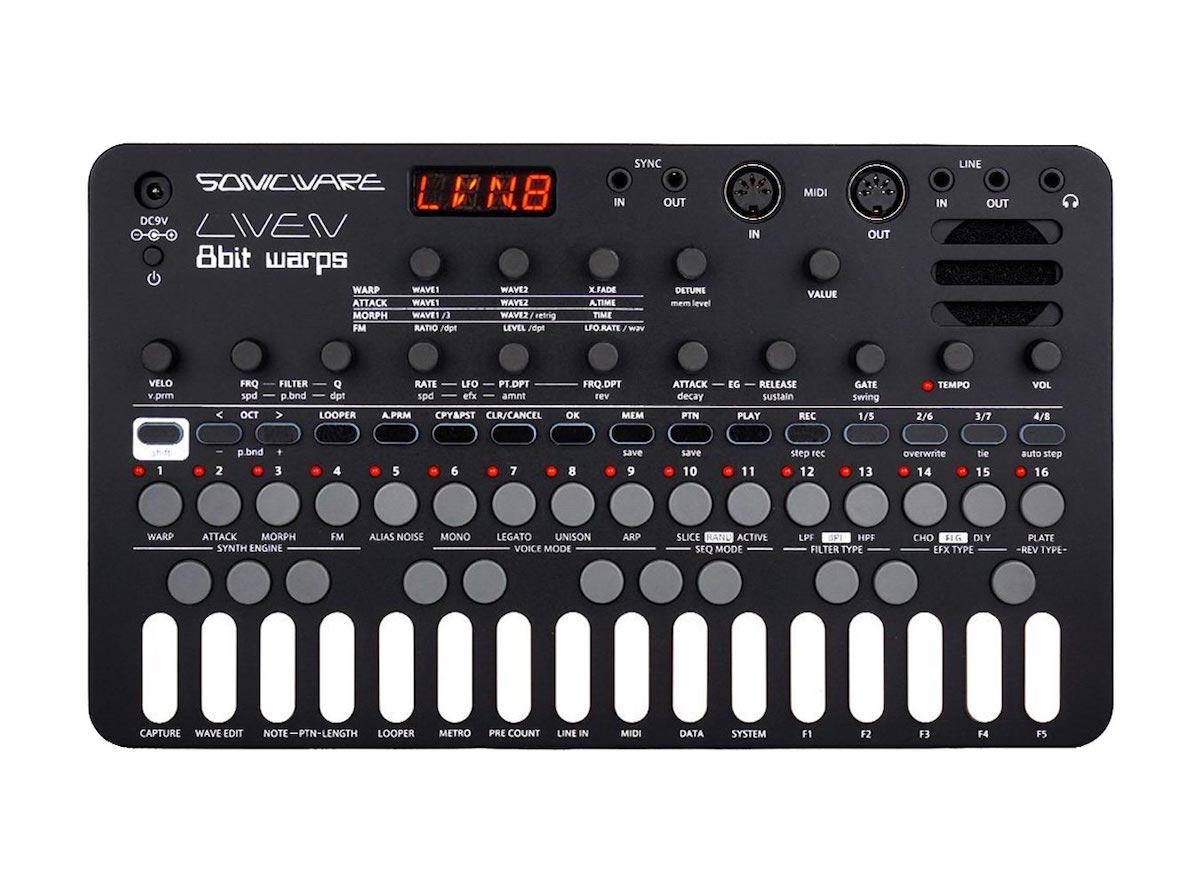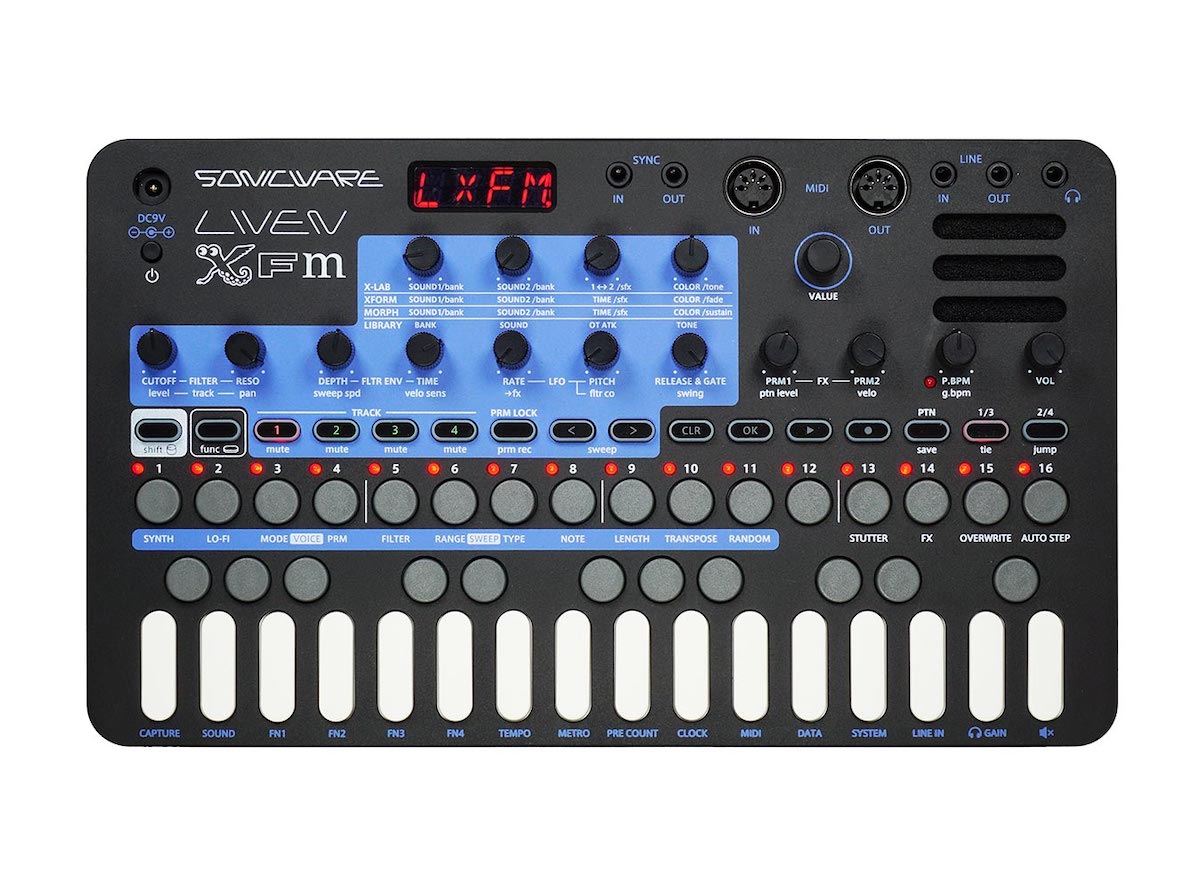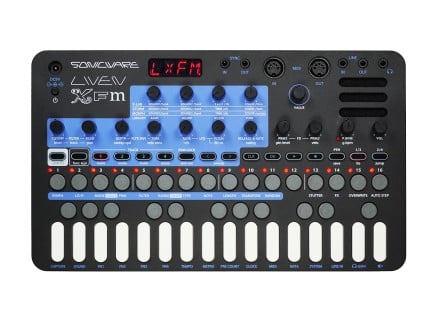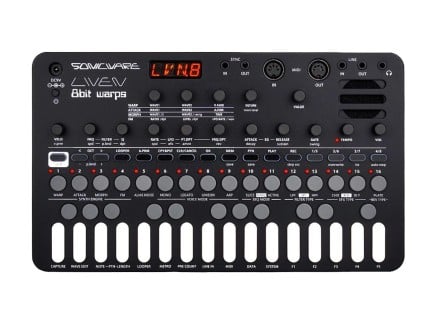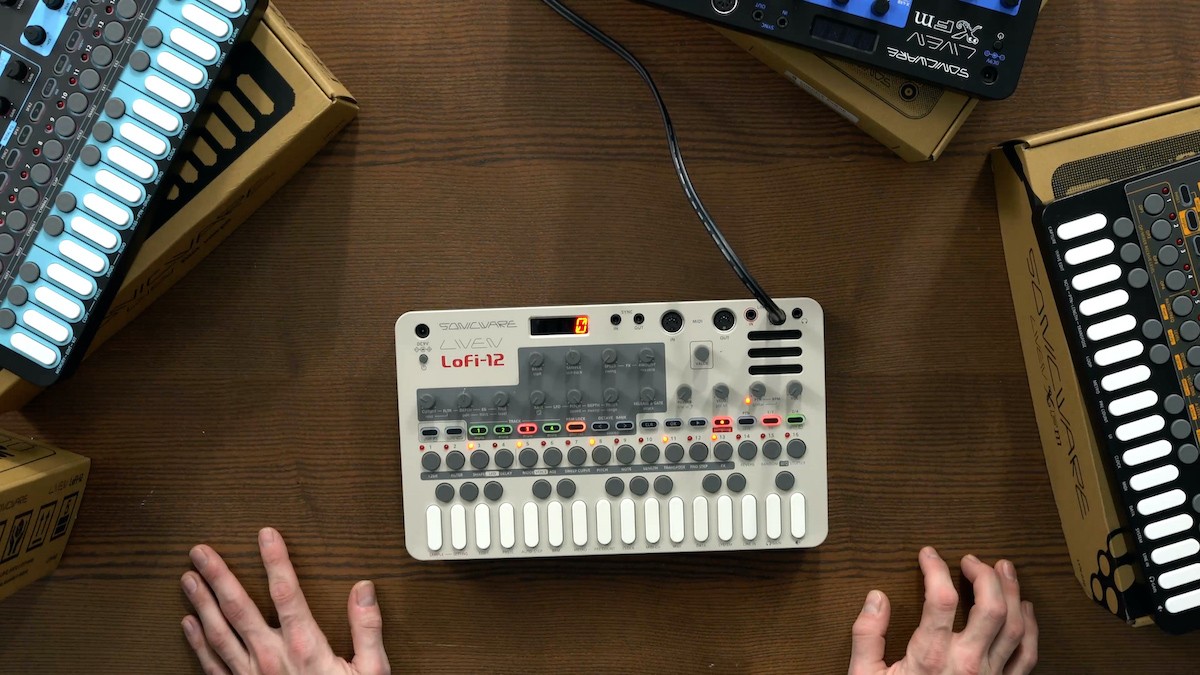The last decade, we've seen some amazing feats of musical technology—developments that, in years past, simply wouldn't have been possible. These bleeding-edge developments can take many forms: groundbreaking new synthesis methods, incredibly powerful multi-effects, all-in-one workstations, hardware implementations of concepts never before explored in instrument design. But there's something else fascinating—and truly important that new technological developments make possible: affordability.
As some companies have turned their eyes toward an approach that favors exploration of new territory while sparing no expense, others have shifted at least part of their focus to presenting familiar ideas and concepts at unprecedented prices and form factors. In fact, I think that it's fair to say that this line of thinking has spawned an entire "genre" of instrument. Perhaps one of the earliest catalysts of this movement was 2010's Korg Monotron: a palm-sized, battery-powered analog synthesizer that debuted at $59 USD. It was followed by the Monotribe, an all-in-one analog synth/drum machine/groovebox...and subsequently, their Volca line has taken the forefront. Each device in the series features an identical form factor and similar I/O and sequencing methods—but at the same time, each device presents a unique take on synthesis/sound design, from FM and analog bass synthesis to physical modeling, modular synthesis, and beyond.
This type of instrument family is also exemplified by devices from other companies, such as Teenage Engineering's Pocket Operators or Roland's more recent Aira Compact series, each of which take a similar conceptual approach to the Volca family. And in fact, it can be easy to restrict our thinking about this style of instrument to these relatively well-established companies...but they're not the only ones making gear in this style. For that matter, they very well may not be the ones making the most fully-featured gear in this style, either.
In this article, we're going to take a closer look at Sonicware's Liven series: a family of portable, battery-powered grooveboxes. Each is designed around its own unique synthesis/sound design concept, and features enough internal sound production and sequencing capability to be able to act as its own, self-sufficient beat machine/groovebox/production station. Each Liven box features a similar workflow and I/O, so once you're familiar with one of them, you should be able to transition between them with ease. And best of all, as of the time of publishing this article, they're all priced below $250 USD—making them some of the most fully-featured music production devices in their price range.
In the remainder of this article, we'll take a look at the Liven series's core functionality. We'll then examine each Liven box individually, covering their basic functionality and discovering what makes each one unique—ending with a focus on the newest member of the family, the Liven Lofi-12. Let's go.
Sonicware Liven Series Overview
Sonicware's first significant synth offering was the ELZ_1, a multi-mode synthesizer with eleven unique sound engines that capitalized on the peculiarities of digital synthesis. On ELZ_1, you had access to FM, 8-bit "wave memory" with built-in waveform editing, granular synthesis, masked noise, and much more. Several of these sound engines were completely unique to ELZ_1—giving it a unique, identifiable, and inimitable sonic character. Its relatively low price, its singular sound, and its seemingly Teenage Engineering-inspired design gave it an instant place in many studios and performance setups...and in retrospect, it seems to have paved the way for what was to come: the Liven series.
Each Liven box has a number of features in common. They all share the same form factor and can be battery powered. They all offer a built-in speaker, a 3.5mm stereo line input, a 3.5mm stereo line output, and a dedicated 3.5mm stereo headphone output. They all offer MIDI I/O via 5-pin DIN connectors, and they even include analog sync input and output via 3.5mm jacks. For those "in the know," these features are markedly similar to Korg's Volcas, Roland's Aira Compact boxes, and Teenage Engineering's Pocket Operators—so much so that we have to assume it's all intentional...and that they (perhaps) intend users of those ecosystems to add a Liven box to their own setups. Admittedly, that'd be a solid idea: they'll all play nicely together, and the Livens certainly add an extra level of depth in terms of feature-richness.
All Liven boxes have built-in mechanical keyboards (for playing and sequence programming), are polyphonic, and offer multiple tracks of highly flexible sequencing, including everything from straightforward step sequencing to stutters, parameter locks, and extensive MIDI implementation (sequencer features do vary slightly between each model, so be sure to look up their specific implementations for details). Each Liven box is straightforward enough to be used right out of the box, but you'll quickly discover that, after sitting down with the manual, they're also surprisingly deep. Frankly, we're not aware of many synthesizers that are nearly as well-thought-out at this price point, and they'd be worth it as synthesizers/samplers alone—the built-in multi-channel sequencing and groovebox capabilities (which are also formidable) are just the icing on the cake.
It was't entirely apparent at first that the Liven series was intended to be a series: the first unit was introduced by itself at NAMM in 2020 alongside the ELZ_1. That first unit was the Liven 8bit Warps—still available to this day. Based on the idea of the "wave memory" modes from the ELZ_1, Liven 8bit Warps provides chiptune-style lo-fi sounds. You can access Warp, Attack, Morph, and FM engines—each of which provide a unique perspective on its patently lo-fi sound quality, and can create everything from growling bass tones to crunchy/heavy percussion and dream-like pads.
Liven 8bit Warps can cover a surprising amount of ground right out of the box, but it also offers deep sound manipulation capability...including the ability to create your own waveforms and more. In addition to the extensive sequencing capability, Liven 8bit Warps also features multi-track audio looping functionality (including the ability to loop external audio via the line input). If you're into chiptune-esque audio and lo-fi digital synthesis tones, 8bit Warps will make a solid expansion to your setup.
Liven XFM was the second member of the family—this time focusing on FM, a notoriously complex synthesis method spearheaded by Yamaha's DX series in the 1980s. In the years following the release of the DX-7 and other instruments, FM gradually developed a more-or-less negative reputation as a technique altogether. The DX series boxes suffered from relatively complex user interfaces, which coupled with their entirely new approach to sound design was a significant deterrent to musicians and sound programmers. In the last five or so years, however, we've seen several new approaches to FM-based instrument design, each bringing its own performance and editing concepts that, in the best situations, make FM considerably more approachable than it ever has been.
Liven XFM is one such device. Offering four FM-based synth "engines," it provides a streamlined approach to creating several different types of FM sounds. XLAB mode blends multiple sounds together to create new sounds; XFRM mode transforms between multiple sounds; XLFO morphs cyclically between two sounds; and LIB mode plays sounds selected from the internal memory. Combining this streamlined approach to FM synthesis with filtering, arpeggiation, and the same complex sequencing potential seen in 8bit Warps, XFM is all about making it easy to get started turning FM tones into full tracks. You'll be able to instantly access everything from warbling FM drones and swelling bass to classic bells, chimes, and electric piano tones—and when you're ready to dive deep into the sound engine, you can once again get truly deep, accessing all parameters for every FM operator that you'd expect to find on a more conventional DX-style synth. Whether you're a hardcore FM programmer or just looking to make tracks out of distinctly '80s-flavored synth tones, XFM is just rad.
The Liven Bass & Beats is more obviously catered toward beat production than its siblings. Designed to act specifically as a drum and bass machine, it contains a multi-track drum machine and a wavetable bass synthesizer—and I strongly recommend checking out the demo above for a taste of what it can do. It contains 150 high-quality drum/percussion/rhythm-oriented sounds, including risers and tension-building elements that make it simple to craft everything from straightforward house and techno to future bass, DnB, dubstep, and sounds unlike anything you've ever heard. As with its counterparts, it's ready to use right out of the box...but again, sitting down with the manual will reveal a startling level of control over its internal sound engines—from advanced wavetable synthesis editing options to fine-tuning of drum sound parameters.
Liven Lofi-12: A Modern-Day Vintage-Style Sampler / Groovebox
And that brings us to the most recent addition to the lineup: the intentionally lo-fi Liven Lofi-12. With a sound and color scheme inspired by vintage samplers (think classic Akai MPC vibes) and the sound quality to match, Lofi-12 is perhaps one of the most fun and exciting additions to the lineup so far.
Lofi-12 features a retro-inspired sampling engine with a 12-bit sampler mode, taking you straight to the sound quality of classic designs from Akai, E-mu, and others. You can also use it in 16-bit operation, with a sample rate of either 12kHz or 24kHz. Combined, these options give you a variety of angles on classic '80s lo-fi sampling textures. This isn't just based on downsampling or bitcrushing—it's truly recording and playing back at these "suboptimal" sample rates/bit depths for a truly authentic vintage sampler sound.
When used at 12kHz, you have up to four seconds of mono sampling per sample slot (or two seconds at 24kHz). You have plenty of sample editing/modification tools onboard, allowing start/end point trimming, pitch adjustment, reverse, sustain looping, filter, and modulation options. Once you've sampled sound into the external input, they are automatically assigned to the mechanical keyboard...making it super simple to play sampled sounds chromatically (think Emulator or other vintage keyboard sampler). It has a maximum of ten voices of polyphony, and several voice modes for exploring different approaches to mono, poly, and even arpeggiated voicing structures. You also get dedicated per-track filter and envelope, LFO, and more—as with all the Liven boxes, you can go surprisingly deep if you want, but it's also super easy and quick to get started making sound.
As with other Liven offerings, the Lofi-12 also features a remarkably powerful sequencer. The four-track sequencer features up to 64 steps, with pattern storage for 64 patterns. You can program notes step-by-step or, alternatively, you can record sequences in real time simply by playing them on the keyboard. But the most exciting aspects of the sequencer from my perspective are the Elektron-esque paramter lock and sound lock features. With Parameter Locks, you can record knob changes into your patterns, allowing for dynamic shifts in sound as a sequence progresses. This can either be done by recording knob motion as the sequencer plays, or you can program specific knob settings on specific steps. The Sound Lock function makes it such that you can even sequence sound changes—making it such that a single sequencer track can play multiple different sounds. This means that on a 16-step sequence, for instance, on steps 1 and 9 you could program a kick, on steps 5 and 13 you could program a snare, and on all other steps you could program a closed hi-hat—and using only a single sequencer track, you've create a complete-sounding beat. You can do this on each of the four tracks...so you're not likely to run out of potential for sonic variety.
The Lofi-12 features a "laid-back" knob, perfect for turning mechanical sequences into more human-like, off-grid beats. This knob shifts the start time of the selected sample in the sequencer, making shuffles/flams/drunken groove simple to create. What's even more exciting is that the laid-back parameter can be parameter locked...so you can create grooves that lurch forward unpredictably. Think SP-1200 jitter, J Dilla rhythmic haze, and generally rubbery, fluid beats.
Lofi-12 also offers independent effects on each track, with 11 styles of track effect to choose from—from modulation effects like chorus and flanger to distortion, bitcrushing, filtering and EQ, compression, etc. Additionally, you have access to six high-quality master effects: six styles of reverb, plus some truly excellent-sounding cassette simulation and vinyl simulation effects for putting that extra-special final touch on your lo-fi productions.
The Liven series are all an incredible bargain—but we have to say, so far the Lofi-12 is likely our favorite. It packages a ton of exciting, fun features into a surprisingly affordable package, and it absolutely nails the sound quality that it's going for. Frankly, it's a blast, it's affordable, it sounds great, and it presents a quite thorough/complete take on a very special/fun/warm/nostalgic musical style. What's not to love?
Liven It Up!
Of course, our enthusiasm for the new Lofi-12 extends to all of the Liven series—each one is a snapshot of a distinct sonic universe. We expect that any given electronic musician will find at least one of these super fascinating. Want some hard-hitting drum 'n bass beats? Liven Bass & Beats has you covered. Vintage chiptune/arcade/vintage digital sound design? Check out Liven 8bit Warps. Need a modern take on classic FM sound design? XFM will do everything you need. And of course, if you're looking for a modern take on the sounds of classic '80s sample-based music and production workflows, we can't say enough good things about the Lofi-12.
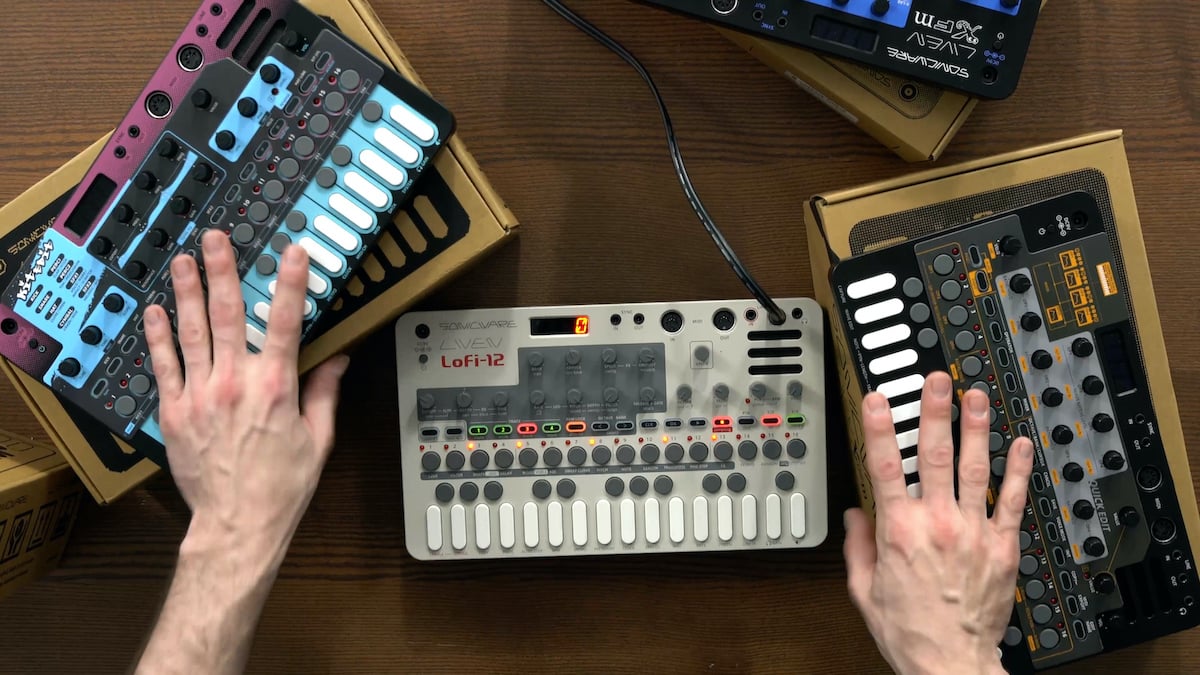
Again, it's worth considering that all of these boxes are designed to be able to easily sync up with one another. It's easy to imagine a setup that includes two, three, or heck, even four of these boxes playing in tandem. Especially considering the sampling and looping capabilities built into particular units, it should be easily possible to create a full-fledged production and performance workflow out of these boxes alone. Or of course, if you have some Volcas or Aira Compact boxes lying around, it'll be easy to tie those into the workflow as well.
Presenting a surprising value and a very welcome step up from most entry-level electronic music gear, the Liven series has a ton to offer for both seasoned musicians and those just starting out in their electronic music production journeys.

